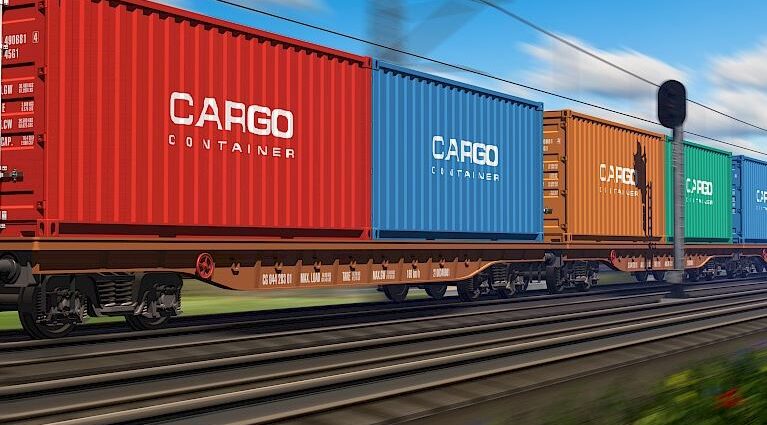Transnet’s newly released Network Statement marks a pivotal shift in South Africa’s freight rail strategy, calling on the private sector to take a leading role in revitalising the country’s struggling logistics infrastructure. If executed effectively, this approach could improve operational efficiency and provide a long-overdue economic boost—vital in a country where GDP growth has hovered below 2% for nearly a decade. But its true potential depends on bold decisions, structural reforms, and strategic partnerships.
South Africa’s bulk logistics shortfalls are costing the economy an estimated R1 billion per day. In mining, companies are increasingly turning to road freight, quadrupling costs compared to rail and placing enormous pressure on national roads. A drive along major routes like the N3 to Durban or the N4 to Mpumalanga now reveals highways dominated by cargo trucks—raising accident risks and damaging infrastructure.
Ports tell a similarly troubling story. Years of underinvestment have left South Africa’s ports ranked among the worst globally for vessel turnaround times, according to the World Bank. Between 2021 and 2023 alone, the country forfeited an estimated R98 billion in coal and iron ore exports due to logistics failures. In agriculture, inefficiencies at the Cape Town port are costing apple and pear producers nearly R1 billion annually.
Amid this crisis, the potential for change is emerging through Transnet’s shift toward private sector participation (PSP). Unlike energy-sector public-private partnerships (PPPs), where the state has typically played the role of investor or purchaser, Transnet’s model invites private players to invest in and operate parts of the rail and port network directly—offering a rare opportunity for sector stakeholders to reshape the future of freight logistics.
Understanding the Challenge
South Africa’s rail freight volumes have fallen nearly 7% since 2019, while mining output has only dropped by 1.4%, pointing to a logistics system struggling to meet industry demand. Core rail lines have suffered from vandalism, theft, and a lack of maintenance—especially locomotive shortages—while aging port infrastructure and equipment continue to delay shipments.
With constrained finances and limited investment capacity, Transnet’s turnaround hinges on enabling third-party access and infrastructure rehabilitation. The separation of Transnet Freight Rail into two distinct entities—Transnet Rail Infrastructure Manager (TRIM) and Transnet Freight Rail Operating Company (TFROC)—is central to this strategy. TRIM will oversee rail infrastructure, while TFROC and private operators share access to the network.
A tiered access tariff system—based on commodity type, distance travelled, and gross tonne-kilometres—aims to make network entry more affordable and transparent. Investors in infrastructure upgrades will also be allowed to recoup costs through differentiated usage fees, incentivising long-term engagement and development.
Building Momentum
The rollout will take time. New private operators aren’t expected on the network until 2027. But with the framework in place, the opportunity is ripe for companies—particularly in mining—to engage more directly with rail logistics.
This is a moment for government to accelerate reforms, reduce inefficiencies, and create a streamlined public-private ecosystem. The Department of Transport has already established a dedicated unit to manage infrastructure projects, PPPs, and private sector contracts with a focus on accountability and delivery.
The auditor-general’s recent call for Prasa to fast-track its R3.8 billion infrastructure modernisation programme underscores the urgency of reform across state-owned entities. Eliminating duplication and fragmentation across logistics and transportation agencies will be key to building momentum.
Leveraging Private Sector Strengths
South Africa has a strong history of successful PPPs, particularly in transportation. The Gautrain Rapid Rail Link, for example, is one of the largest and most successful PPP projects in the country. More recently, Transnet’s five-year agreement with Sasol to transport ammonia—funded in part by Sasol—is a sign that collaborative logistics solutions are viable.
However, Transnet’s current PSP push goes further: encouraging direct private investment into infrastructure, operations, and rail services. This opens the door for mining companies and other freight-reliant sectors to tailor their level of involvement—from investing in ancillary services to taking on end-to-end logistics operations.
Strategic Investment and Stakeholder Engagement
For mining companies, deeper involvement in the rail sector can help reduce reliance on a faltering system. But it also requires significant capital and technical expertise. Equally important is aligning with broader national objectives, such as job creation and inclusive economic growth.
These investments affect a wide range of stakeholders—from local communities to government agencies—which makes collaboration, consensus-building, and risk-sharing essential. Strategic participation can take many forms, including joint ventures, shared corridors, and multi-user forums to support common interests.
A New Path Forward
Private sector participation represents a powerful tool to reverse the decline of South Africa’s freight logistics network. With a supportive legal and governance framework, infrastructure investment from both public and private actors, and long-term commitment from industry, this effort could redefine the country’s logistics landscape.
Still, success is not guaranteed. Mining companies and other investors must weigh their level of involvement carefully, balancing risk appetite with the need to work collaboratively across the sector. This is not just an infrastructure project—it’s a national revival effort that demands partnership, innovation, and shared purpose.
Would you like this rewritten version tailored for a specific audience, such as investors, policymakers, or the mining industry?




